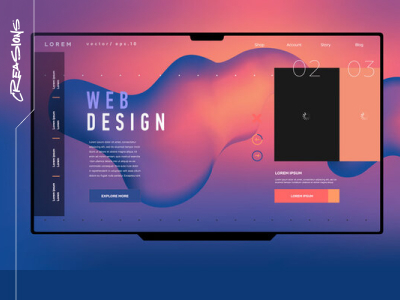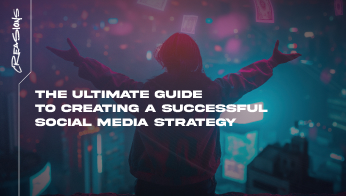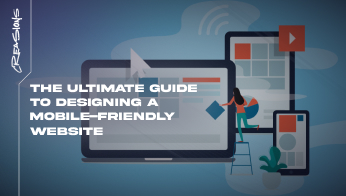Web design is the process of creating, planning, and arranging the visual and functional aspects of a website. It involves the combination of various elements such as layout, colors, typography, images, and content to deliver a user-friendly experience that aligns with a website’s purpose and the brand’s identity. The goal of web design is to create a visually appealing and functional website that provides a positive experience for users while achieving the business or individual’s objectives.
Key Components of Web Design
- Layout and Structure: The layout refers to the way content is arranged on a webpage. It involves organizing elements like text, images, and buttons in a coherent and visually pleasing manner. A good layout ensures that the website is easy to navigate and that important information is highlighted effectively.
- Color Scheme: The color scheme is a critical aspect of web design that helps establish the website’s mood and brand identity. Colors can evoke emotions and influence how users perceive a website. Effective web design uses a consistent color palette that aligns with the brand and enhances the overall aesthetic.
- Typography: Typography involves selecting and arranging fonts to make text readable and visually appealing. It plays a significant role in web design by enhancing readability, setting the tone of the content, and contributing to the overall look and feel of the website. A good web design uses fonts that are easy to read and align with the brand’s style.
- Imagery and Graphics: Images, graphics, and other visual elements are essential components of web design. They help convey messages, illustrate concepts, and add visual interest to the website. High-quality visuals can make a website more engaging and help break up text to improve readability.
- Navigation: Navigation refers to the menus, links, and other elements that guide users through a website. Effective navigation is intuitive, helping users find what they’re looking for quickly and easily. Good web design ensures that navigation is clear and consistent across all pages of the website.
- User Experience (UX) Design: UX design focuses on the overall experience of the user when interacting with a website. It involves understanding user needs and designing a site that is easy to use, efficient, and enjoyable. UX design aims to create a seamless experience that keeps users engaged and encourages them to return.
- Responsive Design: Responsive design is an approach to web design that ensures a website looks and functions well on all devices, including desktops, tablets, and smartphones. It involves using flexible layouts, images, and CSS media queries to adapt the site’s appearance based on the device’s screen size and orientation.
- Content: Content is the information presented on a website, including text, images, videos, and other multimedia elements. High-quality, relevant content is crucial for engaging users and delivering the website’s message effectively. Web design involves structuring content in a way that is easy to read and understand.
- Accessibility: Accessibility ensures that a website is usable by people of all abilities, including those with disabilities. It involves designing websites that can be navigated using screen readers, keyboards, and other assistive technologies. Accessible web design broadens the audience and ensures inclusivity.
- Search Engine Optimization (SEO): SEO is the practice of optimizing a website to rank higher in search engine results. This includes using relevant keywords, creating high-quality content, and ensuring the website is technically sound. Good web design incorporates SEO best practices to increase visibility and attract more visitors.
Importance of Web Design
Web design is important because it directly impacts how users perceive a website and the brand it represents. Here are some reasons why web design is crucial:
- First Impressions: A well-designed website creates a positive first impression and can influence how users perceive your brand. A professional and visually appealing website can build trust and credibility with your audience.
- Usability and Accessibility: Good web design ensures that a website is easy to use and accessible to all users, regardless of their device or abilities. This improves the user experience and increases the likelihood that users will return to the site.
- SEO and Visibility: A well-designed website that follows SEO best practices is more likely to rank higher in search engine results, increasing visibility and attracting more traffic.
- Conversion and Engagement: Effective web design can guide users toward specific actions, such as making a purchase or signing up for a newsletter. By creating a clear and intuitive path, web design can improve conversion rates and engagement.
Conclusion
Web design is a multifaceted discipline that combines creativity, technical skills, and a deep understanding of user behavior to create websites that are both functional and aesthetically pleasing. It plays a vital role in establishing an online presence, building brand credibility, and achieving business goals. Whether you’re creating a simple personal blog or a complex e-commerce site, effective web design is key to delivering a positive user experience and driving success in the digital landscape.










